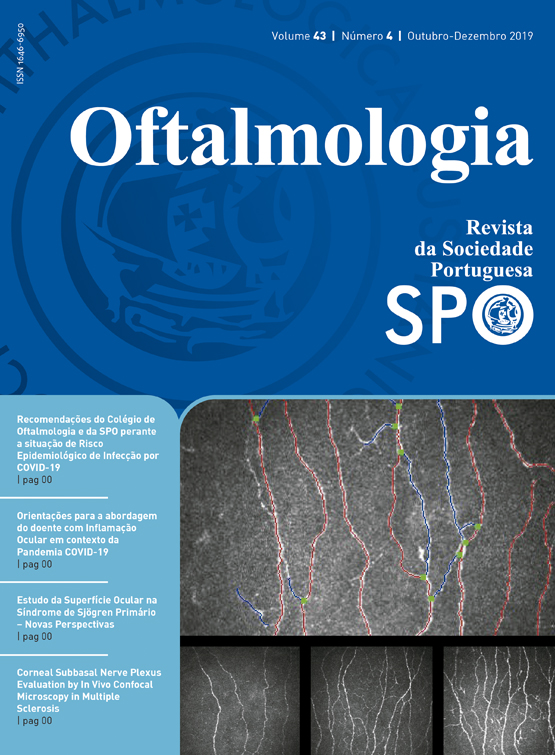Perfil da Transplantação de Córnea do Centro Hospitalar São João entre 2011 e 2018
DOI:
https://doi.org/10.48560/rspo.18246Abstract
Introduction:
Lamellar Keratoplasty (LK) allows the selective replacement of altered corneal layers.
It is associated with fewer complications, lower rejection rate and better functional results, when compared with penetrant keratoplasty (PK).
LK started to be performed in the Centro Hospitalar São João (CHSJ) in 2009, with significant evolution in the number and techniques performed recently. The objective of this study was to evaluate the evolution of surgical techniques and the main indications for corneal transplantation in CHSJ in the last 8 years.
Material and methods:
Retrospective analysis of the patients undergoing corneal transplantation in CHSJ between 2011 and 2018. Demographic variables, surgical indication and type of transplantation were analyzed.
Results:
1075 eyes were included in this analysis.
In 2011, 99.3% of the transplants performed were PK. The percentage of LK increased progressively, especially after 2015. In 2017, 25% of the transplants performed were LK, while in 2018 the percentage was 40.9%. In 2018, 23.9% of the transplants were Descemet's stripping automated endothelial keratoplasty (DSAEK), 11.4% were Descemet membrane endothelial keratoplasty (DMEK) and 5.7% were deep anterior lamellar keratoplasty (DALK)). The main surgical indications were endothelial pathology, keratoconus and previous graft failure. Regarding LK techniques, the main surgical indications were endothelial pathology and keratoconus, with a progressive increase of transplants due to previous graft failure.
Conclusions:
LK techniques performed in CHSJ have increased progressively, especially since 2015. Given the good functional results and low complication rate, LK should be the first option for the treatment of selective lamellar corneal pathology.
Downloads
Downloads
Published
How to Cite
Issue
Section
License
Do not forget to download the Authorship responsibility statement/Authorization for Publication and Conflict of Interest.
The article can only be submitted with these two documents.
To obtain the Authorship responsibility statement/Authorization for Publication file, click here.
To obtain the Conflict of Interest file (ICMJE template), click here





